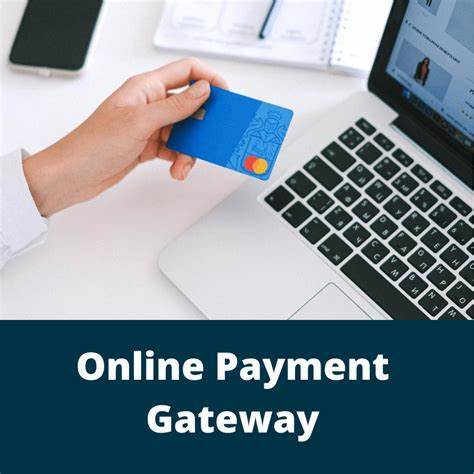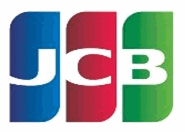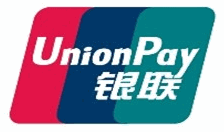Understanding Payment Gateways

In today's digital age, online transactions have become an integral part of our daily lives. Whether it's shopping, bill payments, or financial transfers, the convenience of the Internet has reshaped the way we conduct business. Behind the scenes, payment gateways play a vital role in ensuring these transactions are seamless and secure. In this article, we will delve into the world of payment gateways, understanding their function, importance, and how they enable secure online transactions.
What is a Payment Gateway?
A payment gateway is a technology that acts as an intermediary between a merchant's website or application and the financial institutions that process the payment. It securely transfers sensitive payment information between the customer, the merchant, and the payment processor, ensuring that the transaction is smooth and secure.
How Payment Gateways Work
When a customer initiates an online transaction on a website, the payment gateway steps into action. Here's a step-by-step breakdown of how it works:
- Payment Information Collection: The customer provides their payment details on the checkout page, including credit card numbers, CVV codes, and billing addresses.
- Data Encryption: The payment gateway encrypts this sensitive information to protect it from unauthorized access during transmission.
- Authorization Request: The encrypted payment data is forwarded to the payment processor, which then sends an authorization request to the customer's issuing bank.
- Bank's Response: The issuing bank receives the request and performs security checks, including verifying the availability of funds and checking for any fraud indicators.
- Authorization Confirmation: The issuing bank responds to the payment processor with an approval or decline message.
- Transaction Result: The payment processor relays the response to the payment gateway, which then displays the result to the customer, either confirming the successful transaction or prompting for further action in case of a decline.
- Settlement: At the end of the day, the payment processor settles the funds from the approved transactions into the merchant's account.
Importance of Payment Gateways
Security is paramount in online transactions, and payment gateways provide robust encryption and fraud protection measures to ensure customer data remains safe and confidential. Payment gateways enable businesses to accept payments from customers worldwide, supporting multiple currencies and payment methods. These gateways can be easily integrated into various e-commerce platforms, making it convenient for businesses to implement secure payment processing on their websites. As an added bonus, a smooth and secure payment process enhances customer trust and satisfaction, reducing the likelihood of cart abandonment. In addition, by using a payment gateway, businesses can simplify the process of achieving Payment Card Industry Data Security Standard (PCI DSS) compliance, which is mandatory for handling credit card information.
Challenges and Future Innovations
While payment gateways have significantly improved online transactions, there are still some challenges they face:
- Transaction Fees: Payment gateways charge transaction fees, which can affect a merchant's profit margins, especially for small businesses and startups.
- Checkout Friction: Lengthy and complicated checkout processes can lead to cart abandonment, emphasizing the need for intuitive and efficient payment gateways.
- Mobile Optimization: As mobile commerce continues to grow, payment gateways must adapt to provide seamless experiences across various devices and platforms.
- As for future innovations, payment gateways are continually evolving to meet the demands of the ever-changing digital landscape:
- Tokenization: Tokenization replaces sensitive payment data with a unique token, reducing the risk of data breaches as the actual card information is not stored.
- Biometric Authentication: Integrating biometric authentication methods like fingerprint or facial recognition can enhance security while streamlining the payment process.
Payment gateways are the unsung heroes of the digital payment ecosystem, ensuring secure and efficient online transactions for businesses and consumers alike. By acting as a secure intermediary between merchants and financial institutions, they play a crucial role in maintaining customer trust and data protection. As technology advances, payment gateways will undoubtedly evolve further, making online transactions even more convenient and secure for the global economy.
Feature Functions
Every gateway has the capability to collect the payment details, encrypt it, and send a request for authorization. However, not every gateway is created equal. Some gateways offer many functions – some you may need, and some you may not even be aware of. Features like fraud-prevention tools, tokenization of stored payment credentials, invoicing, Level II and Level III processing, text-to-pay, card updater, recurring payment schedules, surcharging, and more.
Fraud prevention is probably the most important feature because it’s directly related to revenue. This is where a business can define thresholds for the number of transaction attempts originating from a user, IP address, credit card number, etc. Establishing a velocity check on one or more of these metrics can prevent a world of headaches in the future, especially with the prevalence of brute-force attacks or “card banging.”
Tokenization of stored payment credentials allows a customer to return to your website and make additional purchases without entering their credit card information again. This convenience allows for a higher rate of repeat business.
Invoicing is beneficial to businesses that offer custom work. An invoice can be generated and e-mailed to the customer with a unique payment link embedded in the e-mail that takes the customer directly to your payment page. On the merchant dashboard, invoices can be viewed to check the payment status, and, if necessary, resent to the customer as a reminder of an outstanding invoice due.
Level II and Level III processing applies primarily to wholesale businesses conducting business-to-business (B2B) transactions. This function requires a little more information to be collected, such as tax amount, origination postal code, destination postal code, invoice number, order number, freight amount, line-item detail of purchase, and so on. The benefit of Level II and Level III processing is lower processing costs.
The card updater proactively works with your stored payment credentials and reaches out to issuing banks to retrieve updated payment information for those that are expiring soon. No more attrition of members due to expired cards.
It’s vital to take inventory of what the needs of the business are and put together a comprehensive package that encompasses everything the business needs and not add on any products or services that are superfluous or increase the operating cost unnecessarily.
The Importance of Redundancy
The central tenant of redundancy doesn’t only apply to merchant accounts but to gateways as well. “Two is one, and one is none.” Many gateways tout a “99.9% uptime,” but if you’ve ever found yourself in that 0.1%, you understand the frustration of not being able to conduct business and being at the mercy of the gateway. As part of a holistic approach, we recommend having a backup for your primary merchant account and gateway. Having multiple gateways and merchant accounts will ensure you can conduct business without any downtime or loss of revenue.
Return to Blog







* Created by
